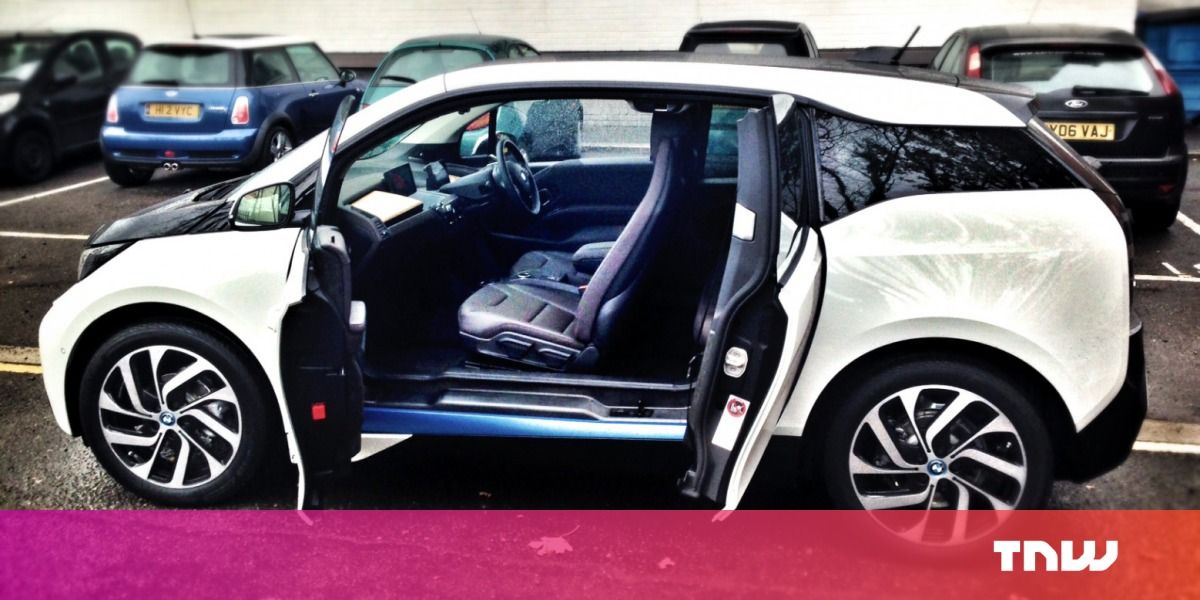This device renders your iPhone screen invisible to everyone except you.
Category: mobile phones – Page 209

Satellite startups turn to reinventing broadband, mapping and other industries
Smartphones have disrupted transportation, payments and communication. But the underlying technology has tangentially changed a completely different sector: satellites.
The advances made in miniaturizing technologies that put a computer in your pocket — cameras, batteries, processors, radio antennas — have also made it easier and cheaper for entrepreneurs to launch matter into space. And investors are taking notice.
The chart below shows worldwide venture and PE investment in satellite technology companies.

Semiconductor quantum transistor opens the door for photon-based computing
Transistors are tiny switches that form the bedrock of modern computing; billions of them route electrical signals around inside a smartphone, for instance.
Quantum computers will need analogous hardware to manipulate quantum information. But the design constraints for this new technology are stringent, and today’s most advanced processors can’t be repurposed as quantum devices. That’s because quantum information carriers, dubbed qubits, have to follow different rules laid out by quantum physics.
Scientists can use many kinds of quantum particles as qubits, even the photons that make up light. Photons have added appeal because they can swiftly shuttle information over long distances, and they are compatible with fabricated chips. However, making a quantum transistor triggered by light has been challenging because it requires that the photons interact with each other, something that doesn’t ordinarily happen on its own.

New Liberty Science Center exhibit puts you in the distracted driver’s seat
After living through a car accident, I think this raises excellent awareness!
Exhibits at the Liberty Science Center in Jersey City usually produce awe and wonder. A new interactive exhibit at LSC, however, gives the participant a grim and horrific look at the results of distracted driving. The AT&T 2018 It Can Wait Tour, a 3D virtual reality exhibit, will be at the science center from Friday, July 6 to through Tuesday, July 10, from 10 a.m. to 5:30 p.m. each day. The exhibit uses virtual reality technology to simulate the potentially deadly consequences of using a phone while driving. The exhibit also features a memorial wall, a wall of keys representing lives lost and a wall made to look like crushed car parts. The Liberty Science Center is located at 222 Jersey City Boulevard.


Volvo is making a true ‘Autopilot’ that’ll let you eat, sleep, or watch movies – coming in 3 years
Self-driving cars have gone from DARPA project to roaming our streets much faster than anyone predicted, but if you bring the topic up with a grouchy truck nuts-owning uncle, the response is probably going to be “Yeah, but when can I buy one?”
Volvo is making a more concrete (and realistic!) pledge than most of its competitors: to have a Level 4 autonomous car in showrooms, buyable and usable, by 2021. Level 4 doesn’t mean full autonomy, but what it does mean is that you can have the bulk of your commute completely automated.
Don’t Miss : Get the wireless charger that should’ve come with your phone for $13.

Want to feel more Calm, get some Headspace, and practice Mindfulness Daily?
Good update on the science around popular mindfulness apps — “It is vital that we understand the potential benefits of engaging with such apps, and how these compare to programs that are taught in-person…”
Let me ask again…want to feel more Calm, get some Headspace, and practice Mindfulness Daily?
There are apps for that—hundreds of them, besides the three I just mentioned.
These apps make a promise: Rather than investing countless hours and dollars in mindfulness classes or mindfulness-based therapy, we can choose to meditate from the comfort of our smartphones. Users are flocking to mindfulness apps in hopes of cultivating kind attention to their own thoughts and feelings, and of reaping the mental and physical benefits that go along with mindfulness.

Apple, Samsung, BMW, and others are working on a digital car key
A bunch of modern cars already let you unlock your vehicle using your phone, but there isn’t a standard to ensure that the feature will work across devices for years to come. Thankfully, a number of tech firms and automakers are coming together to sort that out.
More than 70 companies, including the likes of Apple, LG, Samsung, Panasonic, Audi, GM, BMW, Hyundai, NXP, Qualcomm, and Volkswagen, have joined hands under the Car Connectivity Consortium to create the Digital Key standard, which is a specification that aims to let you securely unlock and start your vehicle across car and mobile device brands.
The publication of this standard should not only help more companies adopt these features, but also allow owners to share access to their vehicles with others, through their phones.

Can Thousands of Smartphones Help Detect Cosmic Rays?
Your smartphone has a particle detector on it, and scientists want you to help them uncover how the universe really works and maybe even discover the true nature of dark matter. There are just a few bugs to work out.
High-energy particles from space, called cosmic rays, constantly bombard the Earth. There are all sorts of things we might be able to learn about the universe by studying those particles. We’ve previously discussed high-tech, expensive equipment used to monitor them. But the physicists behind a new project want your smartphone to help gather data on these cosmic rays, hopefully revealing new insights into dark matter and other strange phenomena.
“This project can only be successful with a large number of people,” Piotr Homola, associate professor at the Institute of Nuclear Physics at the Polish Academy of Sciences, told Gizmodo. “We need public engagement on an unprecedented scale.”

This Smartphone Pioneer Is Fighting to Create a Transhumanist Superdemocracy
It’s a philosophy best exemplified by Wood’s book released last month, Transcending Politics: A Technoprogressive Roadmap to a Comprehensively Better Future, which starts by declaring politics “broken,” technology as something that “risks making matters worse,” and deems transhumanism the force that can fix it all “comprehensively”:
David Wood, a transhumanist who co-founded Symbian in 1998, is working to develop a transhumanist superdemocracy that uses the best parts of artificial intelligence and communication to draw on the likes of Zoltan Istvan and Peter Thiel in a new movement to create longevity and sustainable abundance for all.